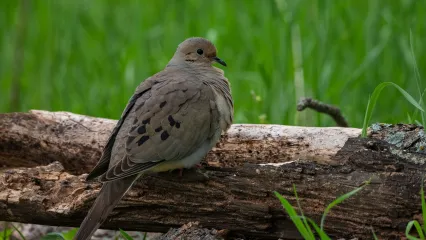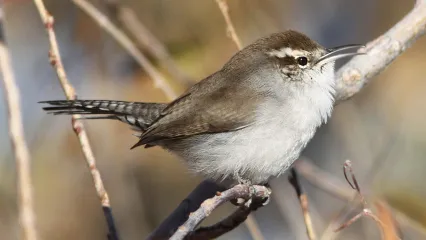
Description
One of six quail species native to the United States, the scaled quail (Callipepla squamata) is one of the most distinguished.
They're dressed in bluish-gray and buff tones with black lipped feathers on the breast, neck and back, giving them a scaled appearance and a unique name. Both the male and female are topped with a white, cotton crest on their head. There are a few differences between the two, one being that a female will have light stripes on her chin. The crest and coloring of scaled quail have also earned them the nicknames cottontop and blue quail. There are several calls made by the various quail species, the "scalie's" being a two-syllable "pe-cos" sound.
These quail also feed on insects such as beetles and grasshoppers. They are not totally dependent on water sources, as much of the moisture they receive is obtained from what they eat. Still, they will use water sources when available.
Size
These birds are 11 inches long on average and weigh between five and seven ounces. They have a wingspan of 14 inches.
Habitat
Scaled quail are found mainly in the Southwest in parts of Arizona, New Mexico, Colorado, Texas, Kansas, and of course, the Oklahoma panhandle. Small populations also exist in southwest Oklahoma.
Scaled quail live in groups, called coveys, throughout the winter months. Any given covey consists of 20 to more than 50 birds. They roost together in circles, tail to tail, which helps reduce their vulnerability to predators.
They prefer open grasslands strewn with shrubbery and mesquite, though in some areas they thrive with almost no ground cover at all. The scaled quail is a runner, able to reach speeds above 15 miles per hour. Grasslands offer little cover, so this quail, the fastest of them all is able to see and outrun predators from some distance off. Scaled quail are very nervous birds and even if flushed, will return to running once back on the ground.
Scaled quail may attempt nesting a second time if their first nest is destroyed by the weather. Predation by skunks, hawks or foxes may also trigger re-nesting attempts. Along with harsh weather and predators, overgrazing of livestock also poses a threat to scaled quail habitat.
Life Cycle
Coveys break up in the spring lo form breeding pairs. This begins as early as April. Like turkeys, the male will strut for females, but rarely will they become physically aggressive with competing males. The female will lay 12 to 14 eggs in a ground-based nest, often built under brush shrubs or a cactus to avoid harsh weather and predators. After 22 days, the eggs hatch after which the chicks waste little time developing. They are running and keeping up with their parents within a day's time, and by 12 weeks old, they are about as big as the adults. Coveys are formed again in the fall when the chicks branch out from their parents and brood mates. The chicks are ready to reproduce during their first year. This fast growth and reproduction rate helps sustain scaled quail populations.
How To Observe
Scaled quail can be seen in the early mornings and late afternoons feeding on sunflowers, cactus green vegetation, and a variety of other plants and seasonal seeds.


